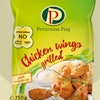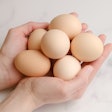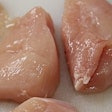
Shared Growth Beyond Crisis was a slogan adopted for the G20 Summit of world government leaders held in South Korea in November 2010, but it would serve equally well to describe the trend in global feed production over most of the past 12 months. Where 2009 had undoubtedly been difficult for feed manufacturers in many countries, there was a recovery of volumes and of optimism in 2010 - until fears resurfaced in the later part of the year about the price of grain.
As a result, a mixed picture was found by our latest World Feed Panorama survey of the quantity of compound feeds for all species made by commercial and industrial mills. Just as there were numerous examples of national feed industries increasing their annual tonnage, so also the first estimates reaching us from other places pointed to a standstill in production, or perhaps a small downturn.
Our survey report a year ago said that the global output of compound feeds had managed to grow by around 1% in 2009, to a total of 707.6 million metric tons, despite the pain caused to national and regional economies by the international financial crisis and the continuing fall-out from a highly volatile grain market. A year later, on the basis of preliminary data, we have put world feed production in 2010 at some 717.6 million metric tons. In other words, we believe the world total rose again last year, by about 1.4%.
Several possible reasons can be proposed for this relatively small annual increase in what was expected to be a better year for the feed sector globally.
One is that the rather fragile economic recovery in several areas of the world delayed the increase forecast for animal protein consumption and therefore slowed the growth in feed demand. Another is that the grain price rise in the second half of 2010 hit the confidence of livestock farmers, who reacted by postponing any planned expansion of animal numbers.
Europe
A further factor on the ruminant side in Europe was that dairy farms generally were able to produce more milk from their maize and grass silage, which meant a lower ratio than in the previous year for the quantity of supplementary feeding per unit volume of milk produced. On figures compiled by Europe’s feed federation FEFAC, there appears to have been a slippage in the total compounds output of European Union mills from 153.4 million metric tons in 2008 to 147.6 million tons in 2009 and again to 146.1 million tons in 2010.
Americas
In Brazil, national association Sindicato Nacional da Indústria de Alimentação Animal (Sindirações) extrapolated results for the January-October period to indicate that the Brazilian animal feed industry produced about 60.4 million metric tons of compound feeds in 2010. It would mean a market expansion of almost 3.5%, says Sindirações executive vice-president Dr Ariovaldi Zani.
See chart on major feed producing countries
Feed volumes nationally registered a growth of 3.3% in the first 10 months of 2010, he reports. Brazil’s annual tonnage had slipped by 5% in 2009 after increasing by about 10% in 2008.
Both broiler chicken and layer hen feed production advanced strongly between January and October, prompting a forecast of an increase to 33.8 million tons for the annual output of poultry feeds in 2010 compared with 32.64 million tons in 2009. The Brazilian association projected approximately 15.3 million tons of pig feeds produced in 2010, about the level recorded in 2009, with cattle feeds rising slightly to 7.1 million tons from 6.78 million tons.
But as Dr Zani points out, mills have faced a major rise in production cost due to more expensive raw materials. After a good supply of grain in the first six months of the year, from July onwards the market for the two principal feed ingredients – soybean meal and corn – came under pressure from various factors and jumped in price by 15% and 30%, respectively. Other difficulties highlighted by Dr Zani include a high exchange rate for Brazilian currency, the Real, which has limited export sales of meat and has, therefore, impacted on the domestic feed demand.
Argentina and Mexico are other locations in Latin America reporting volume increases for their feed sectors in 2010. Argentina is now considered to be producing around 11.5 million metric tons of feeds annually. Mexico’s CONAFAB national council of feed manufacturers and animal nutrition considers that the 400 mills active in Mexico produced approximately 27.3 million metric tons of feeds in 2010. The country’s feed production capacity is about 34 million tons, it added. Around 13 million tons of capacity and 10.1 million tons of output relate to commercial enterprises that sell their products, but integrators, in fact, have the larger market share with 21 million tons of capacity and 17.2 million tons produced.
Africa
Africa The view from South Africa is undeniably positive. “We think that feed sales here could see a real growth rate of 4-5% in the 12 months to March 2011,” declares De Wet Boshoff, executive director of South African feed manufacturers’ association AFMA. “Our market did not escape the economic crunch after 2008, decreasing from 7.5% of real growth that year to just 2% in 2009. This was led mainly by a consolidation effect as farmers’ expansion plans were put on ice and stocking densities were reduced until better economic conditions prevailed.
“The impact of the economy on consumer spending translated through to a delayed recovery in the total food chain. However, the South African compound feed market recorded 4.5% growth between April 2009 and March 2010, largely driven by an increase in sales of poultry feeds. Although protein prices have since stayed rather high, we have enjoyed the advantage of having a bumper maize crop of about 13 million metric tons compared with our annual corn requirement of 10-11 million tons. That has given a lower corn price on SAFEX (South Africa’s agricultural commodity futures exchange) and our feed companies were even able to lower their prices in the marketplace, softening the conditions experienced by their customers.”
Asia
In Indonesia, the most recent annual growth rate for feeds has been estimated conservatively at 3.1%. Some Indonesian sources say this fails to take account of the new mills that have been opened during the year and at least a 4% rise in national feed production has occurred in 2010. The main drivers locally are the sectors for poultry and aquaculture, taking 85% and 12%, respectively, of all feeds produced.
Aquaculture remains the hottest part of the Vietnamese market, to judge by remarks from Philippe Serene at feed company Proconco in Vietnam. “I can confirm that Vietnam’s total feed production in 2010 is expected to have reached 10.9 million metric tons compared with 9.5 million tons in 2009 and only 6.6 million tons as recently as 2006,” he told us. “One limiting factor in the past year has been from animal diseases, such as PRRS in pigs and also foot and mouth disease.
“The aquaculture feed market has grown even more, from a level of 662,000 tons in 2006 to 1.92 million tons in 2009. Vietnam today has about 240 mills producing feeds for farm animals and 106 production sites for aquafeeds. New projections here say that the farm feed volume will grow to almost 16.4 million tons by 2015 and to over 19.2 million tons in 2020. By then, the Vietnamese aquaculture sector is forecast to be using 5.5 million tons of feeds per year.”
However, sales of feeds for fish farms reportedly suffered a downturn in the Philippines last year. Although the decrease was probably only about 5%, officers at the Philippine Association of Feed Millers have emphasised the contrast with the 6% per year average growth rate of the country’s aquaculture production in the previous 10 years.
Grain effects have provided a bigger talking point recently among feed manufacturers in the Philippines, where the total demand for complete feeds dropped significantly in 2010. “The dramatic uptrend in global commodity prices since the middle of the year hit us hard,” one industry insider comments. “Philippine mills traditionally use wheat as a substitute for maize, but a switch to feed wheat was unable to offer much relief this time from a corn price that has been on the rise since the end of the harvest season in October.”
The feed sector in the Philippines was not helped by local pork prices remaining weak. What is more, although poultry feed sales stayed strong, there have been fears of a return to the over-supply of broiler chickens last seen in the middle to late 1990s. An evolving glut of broilers was reported again in 2010, blamed on the aggressive expansion of major integrators in recent years.


















